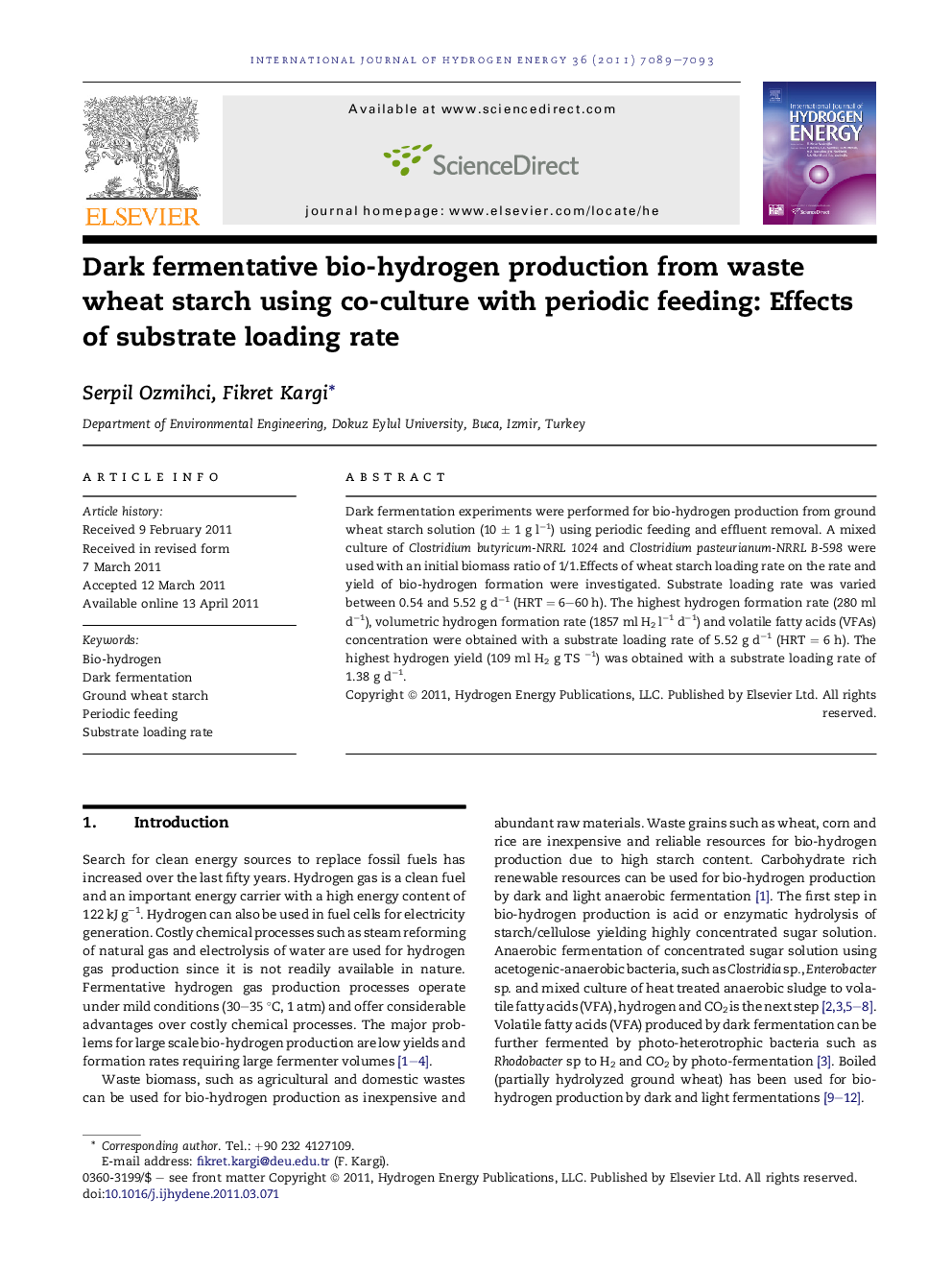| Article ID | Journal | Published Year | Pages | File Type |
|---|---|---|---|---|
| 1272097 | International Journal of Hydrogen Energy | 2011 | 5 Pages |
Dark fermentation experiments were performed for bio-hydrogen production from ground wheat starch solution (10 ± 1 g l−1) using periodic feeding and effluent removal. A mixed culture of Clostridium butyricum-NRRL 1024 and Clostridium pasteurianum-NRRL B-598 were used with an initial biomass ratio of 1/1.Effects of wheat starch loading rate on the rate and yield of bio-hydrogen formation were investigated. Substrate loading rate was varied between 0.54 and 5.52 g d−1 (HRT = 6–60 h). The highest hydrogen formation rate (280 ml d−1), volumetric hydrogen formation rate (1857 ml H2 l−1 d−1) and volatile fatty acids (VFAs) concentration were obtained with a substrate loading rate of 5.52 g d−1 (HRT = 6 h). The highest hydrogen yield (109 ml H2 g TS −1) was obtained with a substrate loading rate of 1.38 g d−1.
► Utilization of pure co-culture or defined mixed culture of anaerobic bacteria (Clostridia sp) instead of heat treated anaerobic sludge in dark fermentative hydrogen gas production has the potential for improved yields and formation rates due to elimination of H2 gas consuming methanogens and homo-acetogens. ► Utilization of defined mixed culture provides control of metabolic pathways and products resulting in high H2 yields by controlling the composition of the bacterial consortium. ► The use of defined mixed cultures is a rather novel approach with high potential for development. ► Operation by periodic feeding and effluent removal eliminates substrate and product inhibitions and also helps adjusting the metabolic rates of bacteria by controlled feeding.
